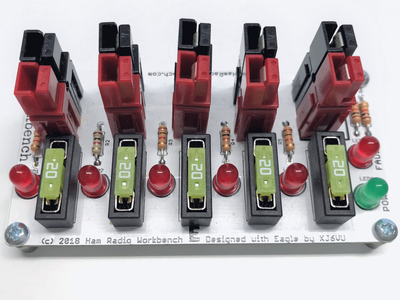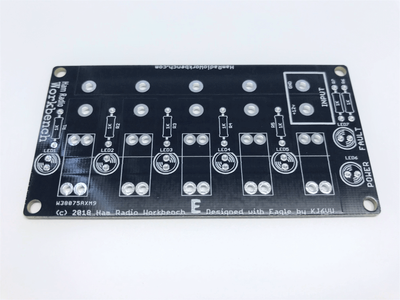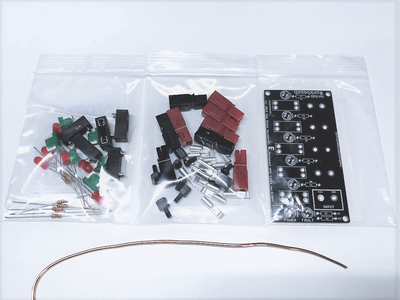Introduction |
The Ham Radio Workbench 12V DC Outlet Strip allows you to share a single 12V power source with up to four other devices.
This board is designed to support communication activities using a single 100 Watt HF radio, which will not operate at 100% duty cycle at full power, or a single 50 Watt FM VHF/UHF Radio that draws approximately 16A at 13.8VDC in QSOs. This project features:
|
Documentation |
!!!CAUTION!!! It is not recommended to operate at the Operational Maximum Current of 25A at 13.8VDC for periods longer than 5 minutes, as the copper traces of the 12V DC Outlet Strip can become hot, exceeding temperatures of 150F after an extended period (5 minutes or more) of constant 25A current draw. Temperatures can approach 200F when a constant 25A at 13.8VDC are drawn for periods of 10 minutes or more. We designed this project to use 14 gauge solid core copper wire (not stranded) terminated with standard 30 Amp power poles - no PCB mounts required! PLEASE NOTE! This project is intended to be completed with Solid Core 14 Gauge Wire-it eliminates the possibility of shorts due to strands and the Powerpoles will have a more solid mechanical connection to the board. If you decide to proceed with stranded, do so at your own risk as it will be CRITICAL to ensure that no strands are touching one another. Also, Powerpoles mounted with stranded wire may not be as mechanically sound on the board as solid.
|




